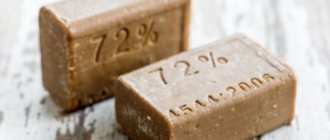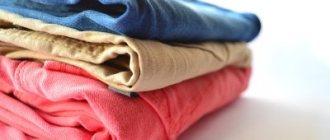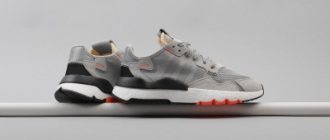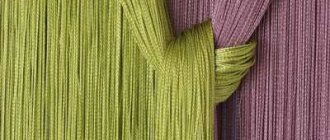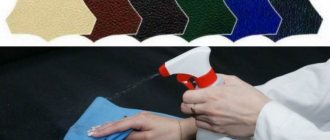The fashionable shoe brand Converse is equally popular among men, women and even small children. These sneakers are comfortable to wear, look stylish and fit perfectly into almost any look. But there is one thing - you need to wash your sneakers in the washing machine correctly. Otherwise, the material will irrevocably lose color and the sole will peel off. Automatic washing is completely contraindicated for Converse analogues; they can only be washed by hand. Read on for all the nuances of caring for white and colored sneakers, and you can return them to their original appearance in no time.
Is it possible?
Almost all types of fabric sneakers can be washed either in a machine or by hand. It is not recommended to use a washing machine for the following shoes:
Decorated with permanent rhinestones, rivets and other decorative elements. During the washing process, they can come off and get into the drain, damaging the machine.- With reflective and illuminating inserts. In the first case, the phosphorus is erased, in the second, the built-in microcircuit breaks due to contact with water.
- Of questionable quality and with a glued sole. It’s rare that glue will withstand machine washing, so the shoes will be irrevocably damaged.
- Heavily worn and with significant damage. Most likely, after such washing, the shoes will no longer be worn. It’s worse if torn pieces of fabric or foam rubber damage the drum or get clogged in the filter. Then you will have to spend more money on repairing the washing machine.
It’s better not to take risks if the automatic machine does not have suitable modes for shoes (sports, delicate wash).
The following are strictly contraindicated for shoes made of fabric:
- wash in standard mode,
- automatic spinning or drying.
More precise washing instructions can be found on the label (located inside the sneakers or included in the packaging).
It is advisable to clean suede sneakers exclusively dry using products specially designed for this purpose, or resort to dry cleaning. Automatic and hand washing are not acceptable here.
This is due to the fact that such material reacts particularly sensitively to water: it becomes rougher and loses its color saturation. This rule does not apply to shoes made of artificial suede; they can be washed in any way.
Preparing to wash rag shoes
Before you start washing, you should prepare your shoes:
Remove the insoles and lacing. If there are decorative elements with push-button fixation, they are removed. All this is washed separately.- Using a stiff brush, clean the sole from large particles of dirt and other stuck debris.
- Shake out the sand from the inside, turning the sneakers over.
- Wet the bottom of the sole and leave it for a few minutes to soak the dried dirt. Then wash it off under running water.
If you do not first clean the dirt from your sneakers, then during washing it will penetrate deeply into the fabric, from where it will then be difficult to remove.
Preparatory stage
Before washing your sneakers you need to prepare:
- It is necessary to clean the sneakers from dirt, sand and debris. To do this, you can use a brush or rag. If the dirt has dried, you can rinse the sneakers under running water or soak them in soapy warm water for half an hour.
- Remove the laces and insoles. By the way, they can be washed together, but with separate elements. If the insoles are glued, then let them remain there, there is no need to tear them off.
- Before washing in the machine, place your shoes in a special bag. If you don’t have one, you can use an old pillowcase instead of a shoe bag. Place your sneakers in it and tie the knots tightly.
If you don’t have a bag or a pillowcase, you can put old clothes in the machine for softness, which you don’t mind throwing away.
This will make the washing process noticeably quieter, and the likelihood of damage to the machine will be minimized.
In the washing machine
When deciding to use an automatic washing machine for washing fabric sneakers, the main thing is to meet certain conditions:
- The optimal temperature range is from 30 to 40 °C. If the water is colder, stubborn stains will not be washed off; if it is hot, there is a high probability of the glued sole coming off and washing out the colors from the fabric.
- Recommended washing modes: “Shoe wash”, “Delicate wash”, “For wool”, “For cotton or synthetics”. In the absence of such, choose the shortest time mode, since sneakers need to be washed from 30 to 40 minutes. Don't forget to turn off the spin and dryer. If you leave the spin, then no more than 500 rpm.
- It is not advisable to use regular washing powder, as it is difficult to wash out and often leaves streaks on the fabric. Preference is given to gel-based products. At the same time, air conditioners and various flavors are not used. If the sneakers are white, you can add bleach (preferably oxygen-containing and without chlorine in the composition).
Washing technology in a washing machine:
the prepared sneakers are placed in a mesh bag designed for washing shoes in a machine and loaded into a drum;- pour a liquid product into the powder tray compartment, add a stain remover or bleach (for white shoes) if necessary;
- set the necessary parameters: mode, temperature, spin speed (not higher than 500 rpm), time;
- Waiting for the washing to finish and drying the shoes.
You can wash no more than 2 pairs of shoes at one time. Sneakers are washed according to the same principle as clothes: you cannot combine white with colored ones.
Additionally, terry towels or any other items are placed in the drum to evenly distribute the load. This will improve the quality of the wash and prevent damage to the drum.
How to wash fabric sneakers in a washing machine, video instructions:
Laundry bags
Separately, it is worth paying attention to the bag for washing shoes in an automatic washing machine.
It is necessary to protect the product from damage and protect the drum from breakage. Such bags are sold in hardware departments. For a bag to be beneficial, it is recommended to choose it based on the following criteria:
- the material should be dense, but with good water permeability - if it is a mesh, then with small holes so that small decor that comes off inadvertently does not fall into the drum;
- the seams must be strong, without protruding threads;
- It is important to have hard and foam inserts for shock absorption.
It is not recommended to use pillowcases for washing shoes in the washing machine, since they are of no use.
Selecting the right product
The most popular, proven over the years, universal remedy is laundry soap. It perfectly fights various types of dirt, eliminating old and problematic stains. However, it must be used carefully - laundry soap can discolor textiles, so it is better not to wash bright fabrics with it.
It is better to wash your sneakers using liquid detergent. The gel copes better with stains and does not leave behind streaks, unlike, for example, washing powder.
It is also better not to use conditioners when washing due to the high probability of streaks.
Important! It is better to wash shoes in soft water. To soften it, add 1 tablespoon of regular baking soda to the water.
Manually
Hand washing is a time-tested and most reliable way to return fabric shoes to their original appearance. If you follow some professional advice, you can achieve a greater effect than from machine washing.
Basic rules:
Hot water is excluded, since it has a detrimental effect on the fabric (as a result, the shoes fall apart and change shape).- The entire washing process should take no more than an hour, including soaking.
- It is better to dilute powdered products in warm water first.
- To remove stubborn stains from the outside, use a soft-bristled brush, otherwise pellets will appear on the fabric.
To make washing easier, sneakers are soaked first.
The following solutions are suitable for this:
- baking soda (70-80 g) + table vinegar, if the fabric is white (100 ml);
- laundry soap shavings (120 g);
- dishwashing detergent (2-3 tsp) + vinegar (2.5 tbsp);
- 5-6 tbsp. l. salt (good for removing grass marks);
- all-purpose stain remover or oxygen-containing bleach.
Any chosen product is dissolved in two liters of water and the sneakers are immersed there for about 40 minutes. The resulting composition can be applied directly to the fabric, but then left for no more than 15 minutes.
When bleaching white sneakers, the product must be applied outside and inside, taking special care to coat the seams and bends. Otherwise, the shade will vary when drying.
Upon completion of the preparatory activities, proceed directly to washing:
Water at a temperature of 30 to 40 ᵒC is poured into the basin.- Mix in a little washing powder or gel (approximately 40 g of product per 3 liters of water).
- Place the sneakers in the solution and brush the outside and inside with a brush. Insoles with laces are washed in the same way.
- Replace contaminated water with clean water and rinse shoes in it. Usually you have to do this several times.
This completes the process, all that remains is to properly dry the sneakers.
Care instructions
No matter what correct method you choose to wash your favorite sneakers, you won’t be able to keep them looking fresh for long if you don’t know how to care for them. And you need to start doing this from the purchase itself.
- treat with special water- and dirt-repellent agents, apply protective cream correctly and ensure that shoes do not remain dirty for a long time;
- Apply products only to completely dry sneakers.
- polish shoes made of leather material;
- washing is unacceptable in very hot water, because there is a possibility of damaging the structure of the shoes;
- dry shoes away from radiators and direct sunlight. When drying, stuff the shoes with paper so that the shape does not change;
- wash insoles frequently;
- do not wear sneakers on bare feet - this has a beneficial effect on the development of bacteria;
In order for our sneakers to serve us for a long time and not want to throw them on the wires after a season, we need to take proper care of them. By following the rules of care, as well as the subtleties of washing sneakers made of different materials, the shoes will last us a very long time.
Dry cleaning a sports pair made of fabric
Since not all sneakers can safely withstand washing in a large volume of water, and there is not always time to dry, they resort to the dry cleaning method.
This means the use of such available materials:
- white toothpaste: apply to contaminated areas and clean with a small brush (you can take a used toothbrush);
- hair rinse: rub into stains with a sponge, then wipe with a dry cloth;
- freshly squeezed lemon juice and regular soda: first moisten with juice, then sprinkle with soda and clean;
- table vinegar (suitable for suede shoes): apply with a brush and scrub off.
The sole can be easily cleaned from black stripes and various stubborn stains with a stationery eraser. Just rub it and you're done.
And the unpleasant smell from inside shoes goes away if you wash the insoles regularly. You can also pour baking soda into your sneakers at night (it is considered the best adsorbent).
How to dry it properly?
The final stage will be drying the shoes . Moreover, it must be correct, otherwise all the work will be in vain and the damaged shoes will only have to be thrown away.
Sneakers should be dried naturally, preferably in a hanging state. It is optimal to place them on the balcony, but not under the scorching rays of the sun. Good ventilation is important.
To preserve the shape, immediately fill the shoes with crumpled paper and change it as it gets wet. You can use electric dryers when your sneakers are almost dry.
How to dry it is prohibited:
- in a drying cabinet;
- using a hairdryer;
- on the battery.
Do not wear wet shoes, as they will stretch and become too big.
In what cases should you contact a dry cleaner?
It is not advisable to try to clean shoes with complex stains on your own . It would be safer to go straight to dry cleaning. They will do everything quickly and delicately, choosing an effective stain remover.
The service package includes not only cleaning the fabric surface, but also the soles. Deodorizing is a bonus. As a result, the shoes become like new.
Winter-type fabric sneakers should also be sent to dry cleaning so as not to unknowingly ruin the insulation.
Causes of odor
An unpleasant odor most often appears due to the accumulation of sweat deposits inside shoes and significantly worsens the overall appearance of a person. The amber is felt especially strongly by those people who choose sneakers for sports.
Other main factors in its occurrence are:
- long stay indoors;
- hot weather;
- increased sweating;
- walking for many hours in tight sneakers;
- infrequent washing of insoles;
- hormonal imbalance;
- unbalanced diet;
- synthetic socks;
- shoes of the wrong size;
- increased physical activity.
Sweating creates an excellent breeding ground for bacterial flora. The warmer the room and the more closed the sneakers are, the more actively bacteria multiply. It is their rapid growth that causes amber to appear.
Tips and prohibitions
Sometimes, after washing sneakers in the washing machine, yellowish stains remain on the fabric. This is possible in the following cases:
- The washing powder has not been washed completely;
- incorrect mode selected;
- improper drying.
If this happens, then rinse the sneakers well and wring them out in a washing machine, and then hang them over the radiator, having previously pushed some paper inside.
A number of other tips for caring for fabric shoes, which will make the washing process easier in the future:
- systematically use electric dryers;
- It is not advisable to wear one pair of shoes every day (it is recommended to wear a change at work);
- It is unacceptable to wash colored and white sneakers together;
- Once a month they replace old insoles with new ones.
If rust stains from metal decor appear on textile sneakers, apply a lemon slice wrapped in gauze to them, and press on top with a hot iron. 10 minutes after this manipulation, rinse this area with clean water.
